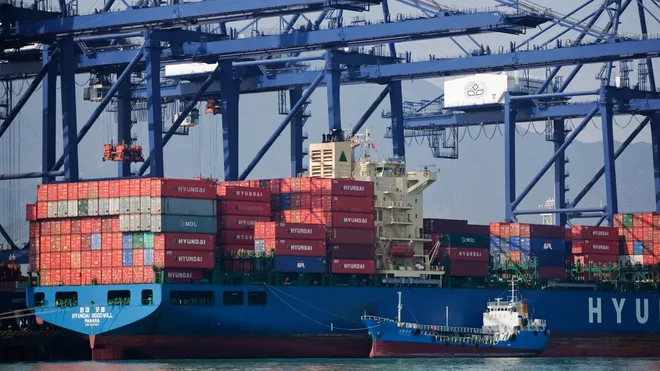‘An economic pandemic’: The coronavirus is becoming a bigger threat to the U.S., economists say
As the coronavirus spreads and raises the risk of recession, some analysts are further downgrading their forecasts for the U.S. economy.
Mark Zandi, chief economist of Moody’s Analytics, estimates the outbreak will reduce growth during the first three months of 2020 by six-tenths of a percentage point to 1.3%, more than his previous forecast of a four- to five-tenths of a point. The halt to Boeing’s production of its 737 Max airliner also is set to significantly hurt the economy this quarter.
The epidemic’s spread in recent days has sharply increased the number of cases in China, South Korea, Italy and Iran. The number of infections worldwide is approaching 80,000, most of them in China, and the death toll now tops 2,600. There have been 35 cases in the U.S.
Living rooms on wheels:Tables, footrests, smart speakers: Here’s what self-driving cars could include
Stock markets:World shares mostly lower after Dow drops more than 1,000
The outbreak is taking a growing toll on the U.S. economy, chiefly through reduced travel and tourism, Zandi says. Also, manufacturers will likely export less to Asia and Europe as demand there slackens. And lower imports from those regions are expected to lead to shortages of intermediate parts and retail products in the U.S., along with higher prices that curb consumer spending.
China outbreak hits U.S. construction
The construction industry is also likely to be affected, because it imports 30% of its products from China, more than from any other country, says Richard Branch, chief economist of Dodge Data and Analytics. Unless the virus is quickly contained, he says, “supplies will continue to tighten – causing building costs to escalate and potential delays or cancellations of projects.”
And the 1,032-point plunge in the Dow Jones industrial average on Monday over reports of the virus’s spread reflects market volatility that’s likely to curtail consumer and business spending, Zandi says.
For all of 2020, Zandi predicts the virus will trim growth by two-tenths of a percentage point to 1.7%. But if the outbreak becomes a global pandemic – a risk Zandi now puts at 40%, up from 20% – that almost certainly would result in a U.S. and global recession, he says.
Threat to U.S. economic expansion
“It’s becoming a threat to the economic expansion that is rising,” he says. The U.S. economy has grown for a record 10½ years.
Diane Swonk, chief economist at Grant Thornton, also is increasing her estimate of the outbreak’s economic impact, possibly by about two-tenths of a point.
“It’s causing an economic pandemic,” she says. “We have a global reaction that’s literally shutting down businesses.”

(The Wuhan coronavirus already has left China and hit neighboring countries, the U.S. and even Europe and Australia. As the death toll and number of infected rise, the economic impact is being felt in the global markets and economy.)
Swonk is concerned that some American manufacturers won’t receive parts from countries overseas, prompting them to lay off workers, who, in turn, will cut back on spending.
“The longer it goes on, the more the risk of a vicious cycle,” says Swonk, who also worries about a “fear factor” that triggers a pullback in business investment beyond actual supply chain disruptions.
Will the virus affect interest rates?
Other economists have a more measured view. RSM chief economist Joe Brusuelas and Nationwide chief economist David Berson say the virus’s advance has not yet led them to further lower their forecasts. Both estimate the outbreak will trim first-quarter growth by a relatively modest two-tenths of a percentage point.
Swonk believes the intensified outbreak will lead the Federal Reserve to cut interest rates again at its mid-March meeting. The Fed has been taking a wait-and-see approach since lowering rates three times last year but said that could change if there was a “material” change in its outlook. Another Fed rate cut likely would provide a boost to stocks.
Zandi, however, doesn’t believe the Fed will reduce rates again unless the epidemic worsens significantly.
The central bank also could act if Monday’s market turmoil continues, says Rubeela Farooqi, chief U.S. economist of High Frequency Economics,
The recent sharp drop in long-term Treasury rates – which reflects a dimmer global outlook because of the coronavirus – is likely aiding consumers more than any Fed cut to short-term rates, says Tom Porcelli, chief US economist of RBC Capital Markets. Ten-year Treasury rates directly affect mortgage rates, for example.
Cleveland Fed President Loretta Mester said Monday that the virus poses a “downside risk” to her outlook. But at the National Association of Business Economics policy conference in Washington, she added that “at this point, it is difficult to assess the magnitude of the economic effects.”
